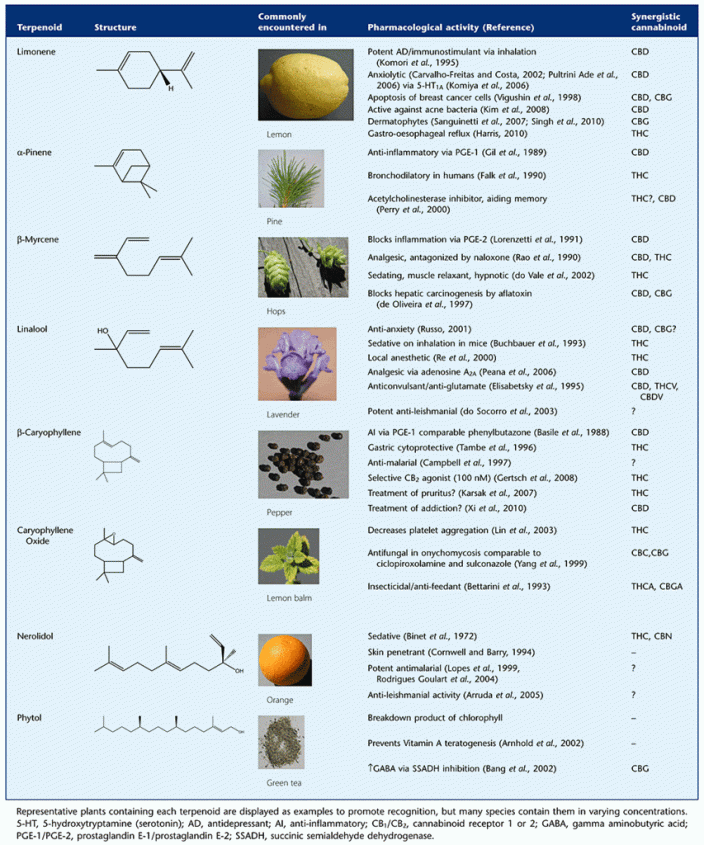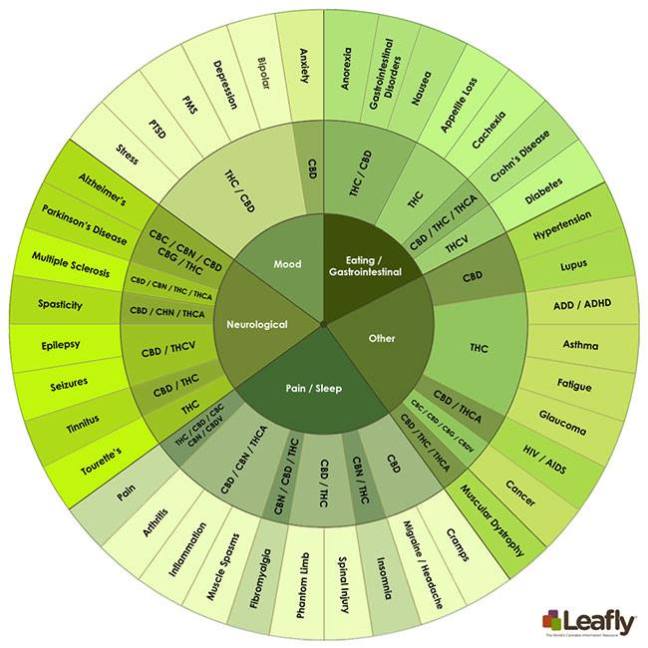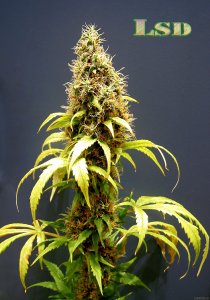
Terpenes are essential to the makeup of Cannabis. They’re what gives the flower its distinct smell. The aromas range from Lemon and Pine, to Buttery and Garlicky. Terpenes also contain powerful healing agents similar to aromatherapy treatments. Every plant species in the world contains terpenes which help it to give off its distinct smell. THC and and other Cannabanoids have no odor, therefore all of the delicious, skunky smell is solely from the Terpenes. Not unlike other strong-smelling plants and flowers, the development of terpenes in cannabis began for adaptive purposes: to repel predators and lure pollinators. There are many factors that influence a plant’s development of terpenes, including climate, weather, age and maturation, fertilizers, soil type, and even the time of day.The diverse palate of cannabis flavors is impressive enough, but arguably the most fascinating characteristic of terpenes is their ability to interact synergistically with other compounds in the plant, like cannabinoids. In the past few decades, most cannabis varieties have been bred to contain high levels of THC, and as a result, other cannabinoids like CBD, CBC, and CBN have fallen to just trace amounts. This has led growers to believe that terpenes help account for the unique effects induced by each cannabis strain.
Some Terpenes are especially successful in relieving stress, while others promote focus and acuity. Myrcene, for example, induces sleep whereas limonene elevates mood. There are also effects that are imperceptible, like the gastroprotective properties of Caryophyllene.
Their differences may be subtle, but terpenes can add great depth to the horticultural art and connoisseurship of cannabis. Most importantly, terpenes may offer incredible medical value as they mediate our body’s interaction with therapeutic cannabinoids. Many cannabis analysis labs now test terpene content, so any consumer can have a better idea of what effects their strain might produce. With their unlimited combinations of synergistic effects, terpenes will likely open up new scientific and medical terrains for cannabis research.
Scientists have identified and characterized the molecular structure of some 20,000 terpenes, which compose the largest category of plant chemicals. These can be further broken down into mono-terpenes, diterpenes and sesquiterpenes, depending on the number of repeating units of a five-carbon molecule called isoprene, the structural hallmark of all terpenoid compounds. “The range of flavors expressed by the genus Cannabis is extraordinary – no other plant on the planet can equal the cacophony of smells and tastes available from cannabis,” says DJ Short, the breeder-artisan who conjured True Blueberry from several heritage landrace strains. The terpenes in marijuana have given the plant an enduring evolutionary advantage. Some of these essential oils are pungent enough to repel insects and animal grazers; others prevent fungus. To combat plant disease and infestation, organic pot growers spray the terpene-rich essential oils of neem and rosemary onto their crops.

Certain terpenoids dilate capillaries in the lungs, enabling smoked or vaporized THC to enter the bloodstream more easily. Nerolidol, a sedative terpenoid, is a skin penetrant that increases permeability and potentially facilitates cannabinoid absorption when applied topically for pain or skin conditions. Terpenoids and cannabinoids both increase blood flow, enhance cortical activity and kill respiratory pathogens – including MSRA, the antibiotic-resistant bacteria that in recent years has claimed the lives of tens of thousands of Americans. One doctor’s article reports that cannabinoid-terpenoid interactions “could produce synergy with respect to treatment of pain, inflammation, depression, anxiety, addiction, epilepsy, cancer, fungal, and bacterial infections.
In the summer of 2011, the Werc Shop in Los Angeles emerged as the first lab to test cannabis strains for terpenes. Since it began providing this service to the medical marijuana community, the Werc Shop has analyzed more than 2,000 bud samples for terpene content. Its analysis has occasionally revealed strains with different names but identical terpene content. “A terpene analysis is like a fingerprint,” explains the Werc Shop’s president, Jeff Raber. “It can tell you if it’s the same strain under different names. We can see strains going by different names that have the same terpene profile. We now know those strains are identical.” Terpene testing has enabled the Werc Shop to identify when strains have been misnamed. “We’ve seen a dozen of samples of Trainwreck, for example, that have a consistent terpene profile,” Raber says. “And then we examine some bud purporting to be Trainwreck, but with a terpene content that differs markedly from what we know is Trainwreck. By testing for terpenes, we can often verify if the strain is what the grower or provider says it is.”
In the future, when the herb is legal nationwide, it should be possible to access strain-specific cannabis oils, as well as made-to-order marijuana extracts with a full array of terpenes artfully tailored to meet the needs and desires of individual users.


Linalool
Linalool, a terpenoid prominent in lavender as well as in some cannabis strains, is an anxiolytic compound that counters anxiety and mediates stress. In addition, linalool is a strong anticonvulsant, and it also amplifies serotonin-receptor transmission, conferring an antidepressant effect. Applied topically, linalool can heal acne and skin burns without scarring. It also includes mint, laurel, cinnamon, birch, and some citrus. Linalool is a chiral molecule, meaning that it has two enantiomers, or two isomers that are non-superimposable mirror images.The ‘left’ enantiomer is known as S-linalool, is found in coriander, palmarosa grass and sweet orange, and has a sweet, floral scent; the ‘right’ enantiomer is known as R-linalool, is found in lavender, basil and bay laurel, and has a woody, astringent aroma.Linalool’s main medicinal function is as an anxiolytic—an anxiety-reducing drug. Lavender has been in use as a calmative for thousands of years, and recent tests on rats have borne out its sedative and motor relaxant effects.
Eucalyptol
a monoterpenoid, is abundant in nature. As well as in cannabis, it is found in eucalyptus, tea tree, bay leaves, basil and sage; it is well-known for its antiseptic, antibacterial and anti-inflammatory properties.
Terpinene
A monoterpene found in various citrus fruits and herbs such as oregano and marjoram, is known to have antioxidant properties; phytol, a diterpenoid, is used by insects as a deterrent to predators, and is also used in various household products such as detergents and soaps.
B-caryophyllene
A sesquiterpene found in cloves, rosemary and hops, exhibits anti-inflammatory effects and has been demonstrated to act as a selective agonist of the CB₂-receptor (no other terpenes or terpenoids have been found to affect the CB receptors). Caryophyllene oxide is the substance in cannabis that is identifiable by drug-sniffing dogs.
Also found in the essential oils of black pepper, oregano and other edible herbs, as well as in cannabis and many green, leafy vegetables. It is gastro-protective, good for treating certain ulcers, and shows great promise as a therapeutic compound for inflammatory conditions and autoimmune disorders because of its ability to bind directly to the peripheral cannabinoid receptor known as CB2.
THC also activates the CB2 receptor, which regulates immune function and the peripheral nervous system. But this is not the reason people feel stoned when they smoke marijuana; instead, what causes the high is THC binding to the CB1 receptor, which is concentrated in the brain and the central nervous system.
Nerolidol
present in neroli, ginger and jasmine, is a sesquiterpenoid with a fresh, woody scent; it is currently being investigated both as a facilitator for transdermal delivery of drugs (due to its ability to penetrate the skin) and as an inhibitor of Leishmania protozoa.
Myrcene
another terpene present in numerous cannabis varietals, is a sedative, a muscle relaxant, a hypnotic, an analgesic (painkiller) and an anti-inflammatory compound. This musky terpene contributes mightily to the infamous “couch-lock” experience
Limonene
Has been used clinically to dissolve gallstones, improve mood and relieve heartburn and gastrointestinal reflux. Limonene has been shown to destroy breast-cancer cells in lab experiments, and its powerful antimicrobial action can kill pathogenic bacteria. (Lemon Kush, anyone?)
Alpha-pinene (essential pine oil)
The most common terpene in the plant world and one often found in cannabis, is a bronchodilator potentially helpful for asthmatics. Pinene also promotes alertness and memory retention by inhibiting the metabolic breakdown of acetylcholinesterase, a neurotransmitter in the brain that stimulates these cognitive effects.

Credits:
http://sensiseeds.com/en/blog/medicinal-properties-terpenes-terpenoids/
http://www.hightimes.com/read/talking-terpenes
https://www.leafly.com/news/cannabis-101/terpenes-the-flavors-of-cannabis-aromatherapy
 Welcome to my Blog. My name is Emily and I am a Budtender at Greenwerkz Dispensary in Glenwood Springs, Co. As a cannabis researcher, I got tired of a lot of conflicting information. Therefore, I have compiled a list of research that is true to the best of my knowledge. Here I will discuss various Cannabis Strains as well as their genetics and effects. There will be weekly updates and Different strains posted. I have tirelessly researched to help bring you accurate information about your favorite strains. I will also include occasional recipes for edibles, tinctures, and concentrates. Please let me know if there is any certain strain or subject regarding Cannabis that you are interested in and I will try to answer your questions to the best of my ability. Hope you enjoy!
Welcome to my Blog. My name is Emily and I am a Budtender at Greenwerkz Dispensary in Glenwood Springs, Co. As a cannabis researcher, I got tired of a lot of conflicting information. Therefore, I have compiled a list of research that is true to the best of my knowledge. Here I will discuss various Cannabis Strains as well as their genetics and effects. There will be weekly updates and Different strains posted. I have tirelessly researched to help bring you accurate information about your favorite strains. I will also include occasional recipes for edibles, tinctures, and concentrates. Please let me know if there is any certain strain or subject regarding Cannabis that you are interested in and I will try to answer your questions to the best of my ability. Hope you enjoy!









